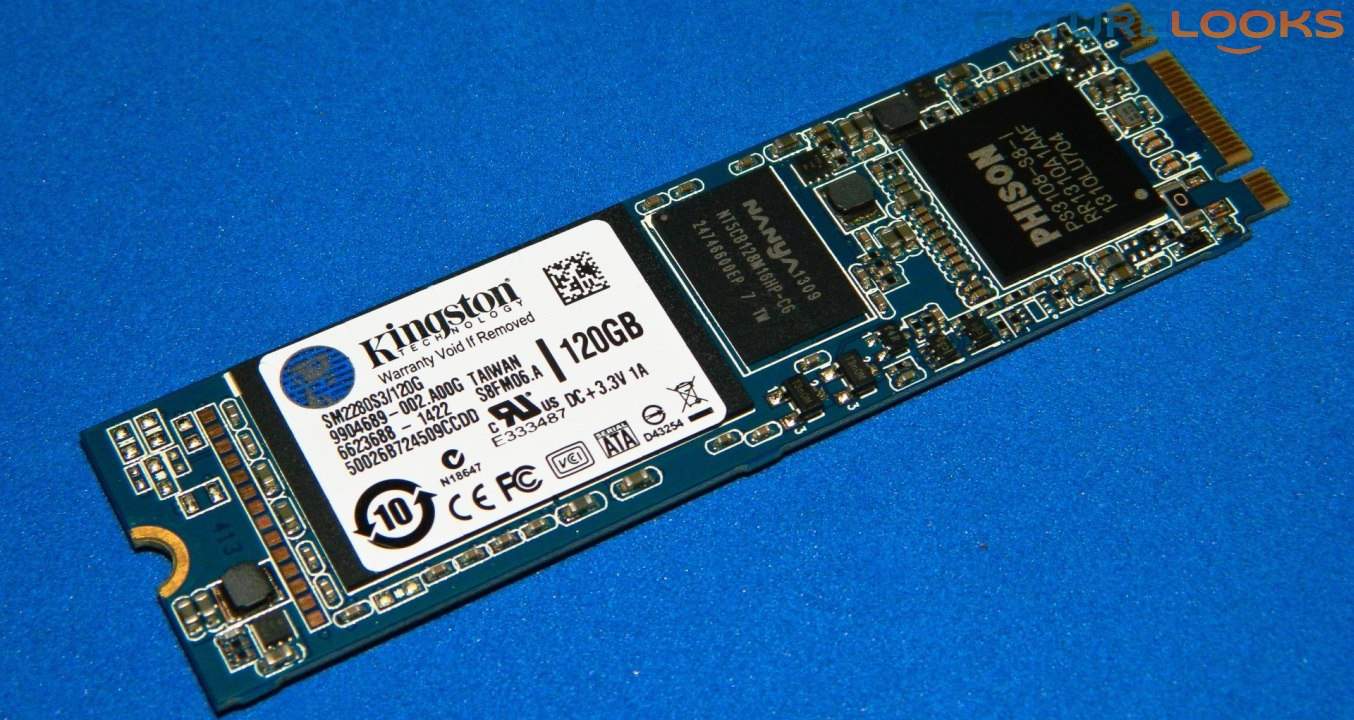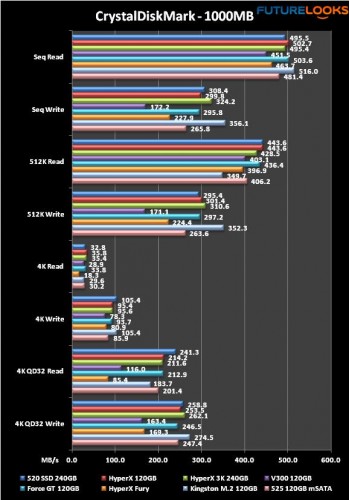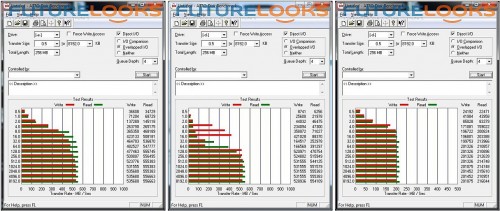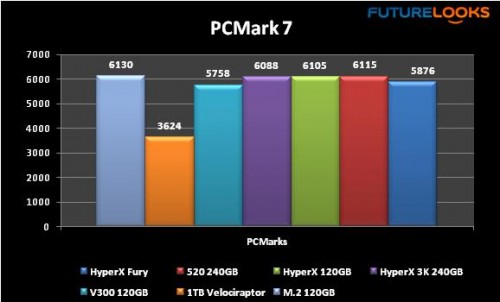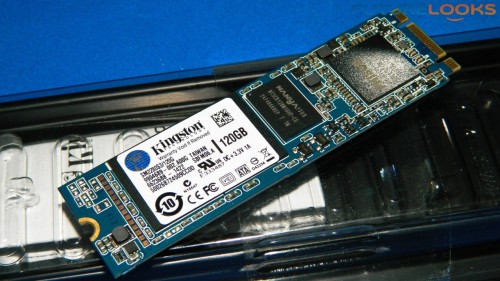Performance results
Because the M.2 taps directly in to the PCIE bus, I suspect performance should measure up equaling if not exceeding typical SATA SSD performance. CrystalDiskMark, SANDRA, ATTO, and PCMark 7 were used to check high data compression like zipping, straight bandwidth capabilities, input/output (IO) requests, and overall system performance respectively.
CrystalDiskMark
The Kingston M.2 2280 actually does a pretty darn good job versus many of the 2.5″ performance SSDs. At 516 MB/s, Sequential read performance is above specifications and the 4K data performance in range with high performance SSDs. The Intel 525 mSATA manages to keep up in 4K read but not write where a lot of the desktop action happens.
SANDRA – Physical Disk
The Kingston SM2280S3/120G is also just a bit faster in bandwidth transfer than the Kingston HyperX Fury 240GB SSD. The interesting thing is that the M.2 has a .09 latency versus the .04 latency of the Fury which passes through the chipset. I would have thought it would be less given the interface.
ATTO
PCMark 7 – (Without Storage Test)
PCMark burdens the system with a lot of requests accessing and executing applications. Speed in terms of frequency and bandwidth make all the difference. Let’s check the results.
The Intel 520 SSD and Kingston SM2280S3/120G both fight it out. But, the M.2 does just a little better. It’s possible the small .05 difference in latency slows the M.2 down just enough for the 520 to keep close. As for the platter based Western Digital 1TB Velociraptor, it just can’t seem to keep up due to longer access time and lower bandwidth.
Final Thoughts
It’s interesting that Intel chose to use a PCIE interface that utilizes components for storage that are about the size of a RAM module. Add a larger PCB containing more storage and it kind of seems like we’re one half step towards using something like a Intel® Solid-State Drive DC P3700. However, the M.2 doesn’t cost several hundred or a couple thousand. Perhaps that’s where M.2 or a derivative is headed in a couple generations; high performance mini-IO would be awesome. More than likely, we’ll see even faster Kingston M.2 devices down the line that will take much better advantage of the PCIE bus.
For now, we have good cost-effective performance in the Kingston M.2 2280 120GB capable of keeping up with the uber high performance SSDs. In tests, the transfer rates were better than its rated specs and IO is especially nimble which explains why over all system performance felt more responsive. Boot times should be right around ten or so seconds on Windows and slightly less in Linux. While we don’t have the larger capacities to test, we do suspect that they will be slightly faster working with the Phison controller and Nanya cache memory.
How much is the Kingston SM2280S3/120G M.2 SATA (120GB) going to cost you? Currently, it’s $80 US at places like Newegg. Other 240/256GB SSD prices seem to be around the $135 to $150 US range, which gives us hope that Kingston’s will be similarly priced. Hopefully, we see those more practical capacities hit the shelves soon. It also works on most everything with an Intel Z97 and X99 chipset, making it highly compatible for a ranges of uses. I definitely recommend it.
Pros
- Compact and discreet
- Easy to install and setup
- Highly compatible on Z97 and X99 motherboards
- Performance was a bit better than specifications
- Programs load very quickly
Cons
- 120GB is fine for laptops, not so fine for desktops
- Costs slightly more than standard internal SSDs
Overall Rating: 8.5/10

Help Us Improve Our Reviews By Leaving a Comment Below!

